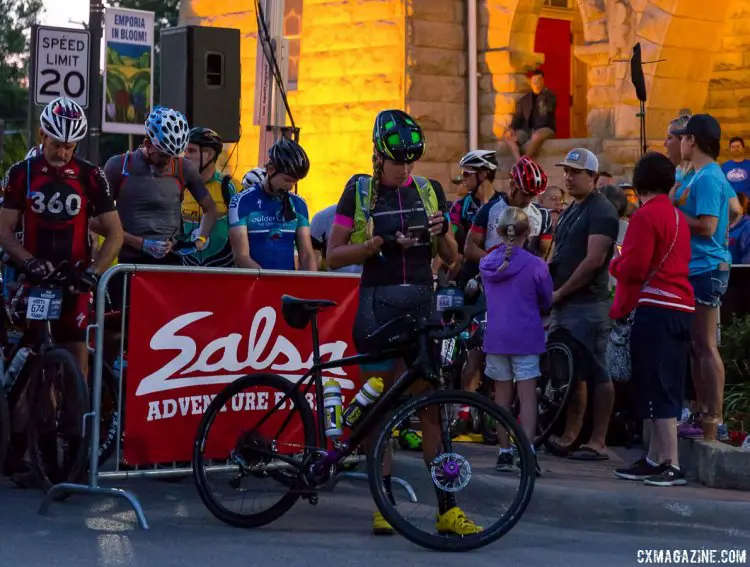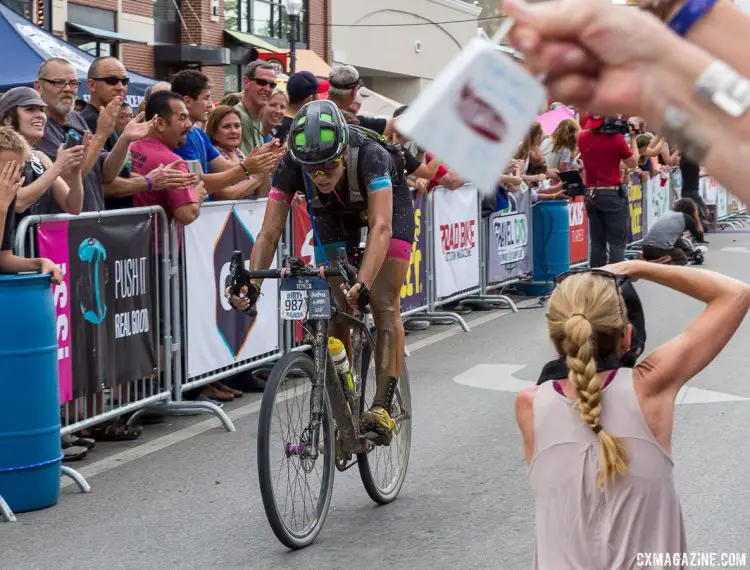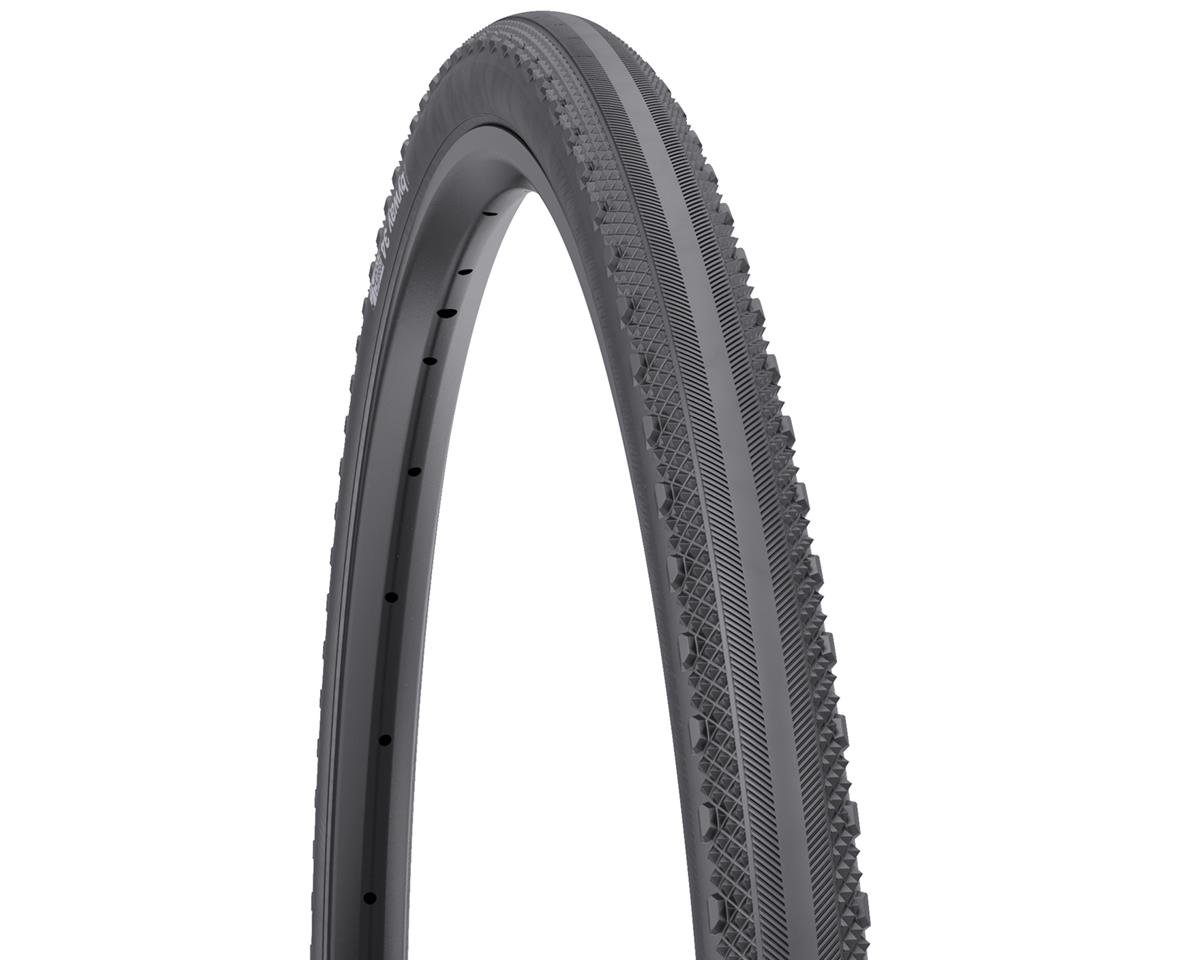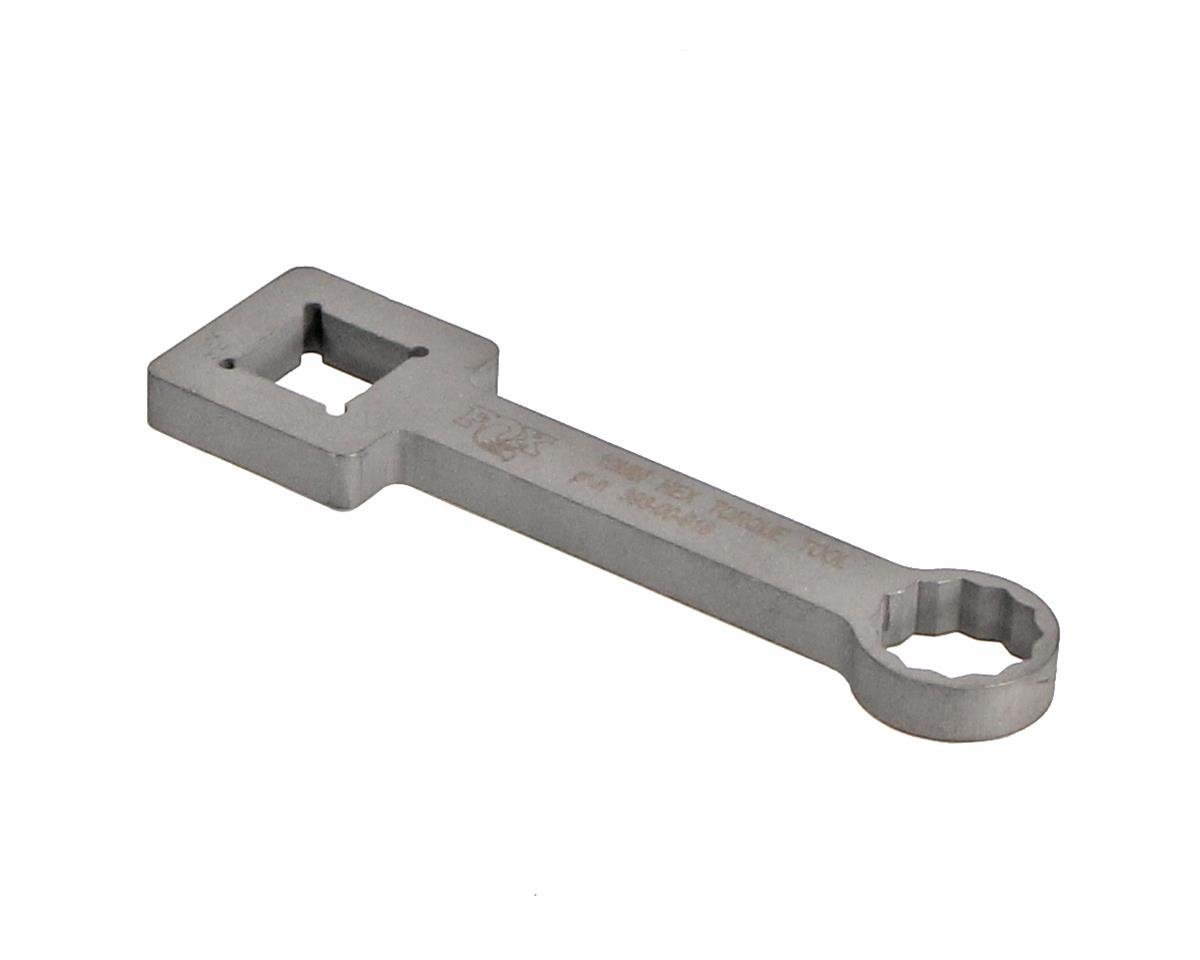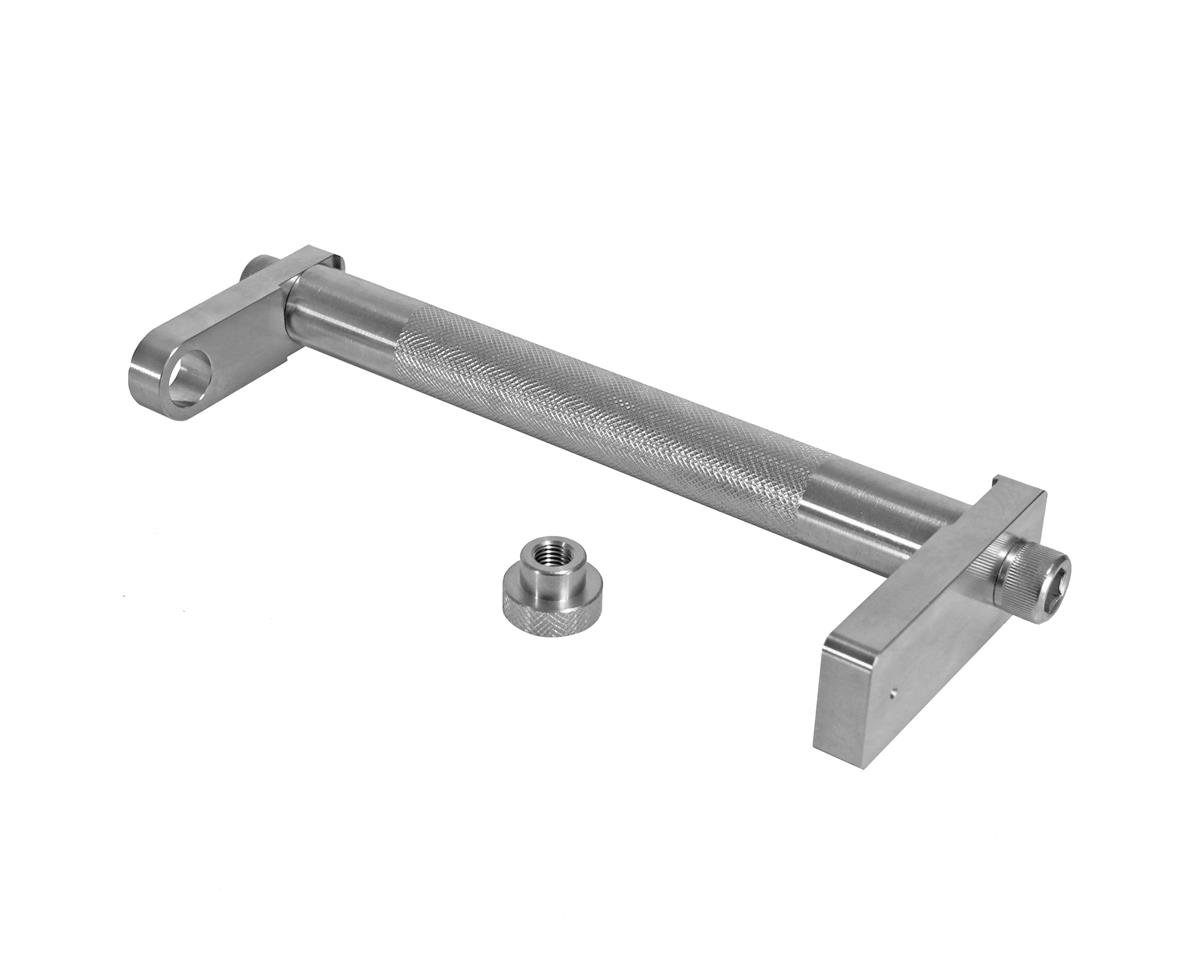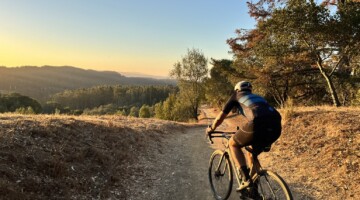While we were following the live updates of the 2017 Dirty Kanza to see how the race was turning out, one woman’s name remained at the top of the standings at every time check. Alison Tetrick started fast, opening a two-minute gap by the first Madison time check, stretching it out to 12.5 minutes by Eureka, and then outkicking two-time winner Amanda Nauman to the line for the one time check that really mattered.
Following along an all-day gravel race can be like watching paint try, but the women’s race at the 2017 Dirty Kanza was suspenseful and filled with drama. Yesterday, we featured our interview with Amanda Nauman, whom many of our readers are familiar with due to her cyclocross and gravel exploits in the U.S. and Europe. Today, we’ve got Andrew Yee’s interview with Tetrick, a Petaluma, California-based established road pro but a gravel newbie.
Cyclocross Magazine: Congrats on the win! Lining up on Saturday in Emporia, how confident were you in your chances to win the title?
Alison Tetrick: I have bike raced long enough to know that you can never be 100% confident, and I was definitely entering uncharted territory with a 206-mile gravel race. With a race this long and in an event I have never contested, I knew there would be a lot of variables and possibilities. I knew my best strategy would be to ride my own race and do the best I could to be ready for anything on the adventure.
CXM: This was your first attempt, correct? What appealed to you to give it a try? Have you raced other gravel events?
AT: This is my first true gravel race and first time doing Dirty Kanza. It actually was my first time ever riding over 122 miles! I have loved watching the gravel scene explode around the country, and I knew that the DK200 was the pinnacle of all gravel racing. I didn’t just want to test the waters, I wanted to jump into the deep end. Rebecca Rusch has been encouraging me to give this a try, and I asked my professional team, Cylance Pro Cycling, last year if I could attend. The plans were made and here I am!
“I have loved watching the gravel scene explode around the country, and I knew that the DK200 was the pinnacle of all gravel racing. I didn’t just want to test the waters, I wanted to jump into the deep end.”
CXM: After Amanda burped her tire, she chased and chased and said she rode with you for the last 90 minutes. How did that time play out? Did you guys take turns pulling or have a tactical battle?
AT: The final hours became about tactics and survival for both of us. We both had ridden different races to arrive together within the last twenty miles. Amanda has the experience and tenacity for an endurance event like this, and I was banking on my road racing fitness and a little luck. We both tried to play the race in the final miles to suit our own style, and we made it a very exciting finish.
CXM: With a road background, was a sprint finish something you were hoping for, even after 11 hours? Was a sprint something you felt confident about taking?
AT: I never considered a 206-mile race would finish in a sprint! As we were coming into town, I was chiding myself for never pre-riding the finish. That is Bike Racing 101, and I made a critical mistake there. I don’t think anyone can sprint after 206 miles, but I was willing to conjure up any snap left in my legs for one final effort. When royalty is on the line, desperate times call for desperate measures.
“As we were coming into town, I was chiding myself for never pre-riding the finish. That is Bike Racing 101, and I made a critical mistake there.’
CXM: You rode a Cannondale Slate to victory. How did you choose your bike? Ted King won on that last year—did you talk with him before the event? Do you credit the suspension in helping you win?
AT: I race on the road for the World Tour team, Cylance Pro Cycling, and we are sponsored by Cannondale. I was very fortunate that Cannondale and the team were excited about supporting my gravel ambitions. I talked to Ted several months ago, and set up the bike almost identically to his victorious Slate from 2016. The only difference was the size of the bars, and I used an SRM. I also received advice from Tim Johnson about the setup and the votes were unanimous that the Slate was the absolute best bike for this event, across all brands. The Slate is built for Kanza.
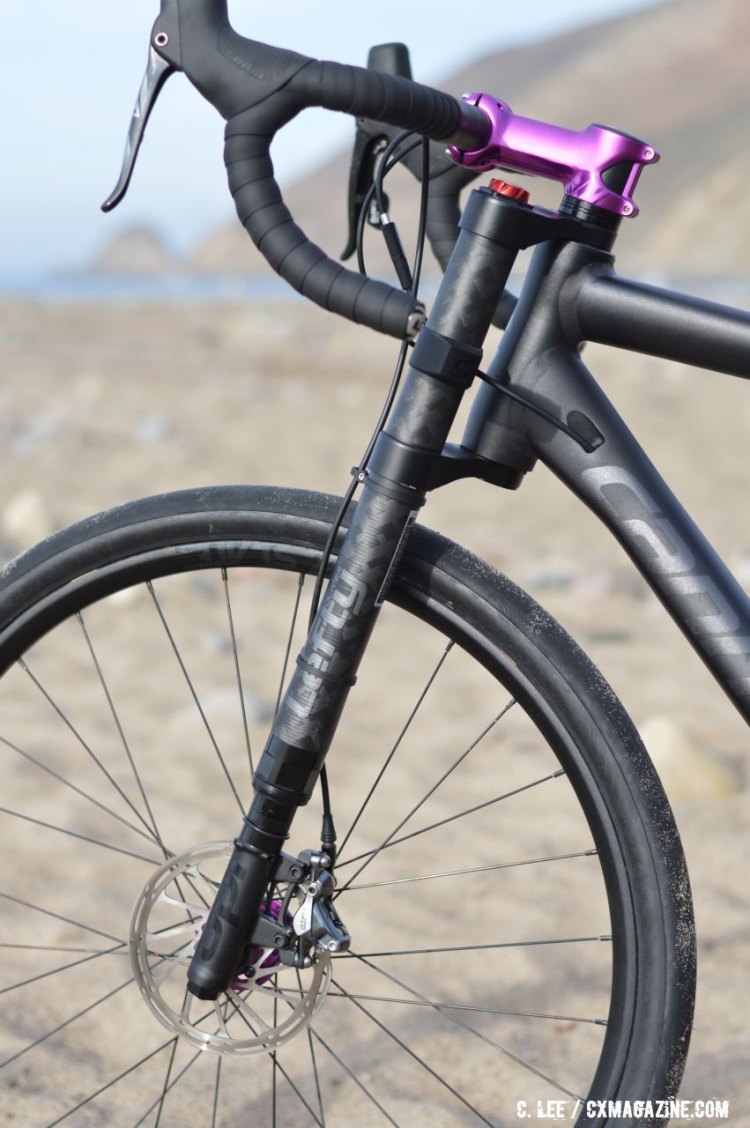
The 30mm travel Lefty Oliver was designed specifically for the Slate and took the edge off the gravel for Tetrick. © Clifford Lee / Cyclocross Magazine
At the beginning of the race, I was more diligent about locking and unlocking the Lefty shock for the different terrain, but in the middle section where I spent 80 miles by myself with more rough terrain, I soaked in all the suspension I could get. I was completely comfortable no matter what the Flint Hills threw at me. I did lock out the shock in the final mile to unleash a sprint, so that was a great option to have. The suspension gave me the confidence to cover unfamiliar rugged terrain with comfort and supple handling. My Cannondale Slate is a steed worthy of Kanza royalty, it’s in her bloodline.
CXM: Any flats, mechanical issues, or hiccups out on course? Tire pressure front and rear?
AT: 42 front, 44 psi rear. I was very fortunate with my setup and equipment performing flawlessly throughout the event. I ran tubeless wheels and thanks to Orange Seal, any punctures were immediately corrected. My hiccups and issues were mainly due to my lack of experience racing on the dirt and pushing my physical limits beyond anything I had done before. As a professional cyclist, I have done a lot of really hard events, but this event was a true individual effort that had me enter a space of a whole new crazy.
I took some wrong turns on course, one which almost cost me the entire race. This was no fault of my Lezyne GPS, it was my brain and fatigue that started making me doubt myself and hallucinate. I also exited the final checkpoint without grabbing new bottles. Yeah, that was a mistake.
“As a professional cyclist, I have done a lot of really hard events, but this event was a true individual effort that had me enter a space of a whole new crazy.”
I could write a list of many mistakes I made throughout the day, but no one can ride a perfect race out there. The race is long enough that you truly experience everything that you possibly could. No matter how good you feel, or how bad you feel, it won’t last. There is always an adventure to be had at every mile in the race against yourself.
CXM: Mat Stephens won with aerobars. You’ve done plenty of TTs in your day. Do you think they’re something you might add to your rig? Should they be allowed?
AT: Personally, I don’t go on group rides with people in aerobars. I can see the competitive desire to use them for aerodynamic advantages. But, like you said I have done plenty of time trials in my day, and that isn’t why I wanted to do gravel races! I was happy with my setup and don’t anticipate I will add them unless it is an entirely solo ride under the right conditions.
“Personally, I don’t go on group rides with people in aerobars…I don’t anticipate I will add them unless it is an entirely solo ride under the right conditions.”
CXM: Who and what was involved in your support team, and what was the pre-race strategy to use them? Did it all go to plan? Can you tell us about your nutrition during the race?
It really took an army to make Dirty Kanza 200 possible and in the weeks leading up, it is like a part-time job getting prepared. I may have traveled with only one support person with me but my support team was from all over the world. The support team extends to my sponsors that made sure I had all the equipment I needed, such as Cylance Pro Cycling, Chamois Butt’r, Lezyne, Speedplay, Camelbak, and of course Cannondale.
I utilized my contact list to ask all the questions I had to former DK200 champions like Rebecca Rusch, Yuri Hauswald, Ted King, and of course my coach (and Rebecca’s coach), Dean Golich of Carmichael Training Systems. I’m lucky I can text these professionals at all hours asking about sealant and tire pressure. I think I am owing them all some beer!
My support person on site, Craig Roemer, has the power of 10,000 people and he knows what I need before I know it. He can also withstand my crazy and snappy nature when I get stressed. That happens to all of us, right? I simply could not have done this without him and my entire support team.
When we first arrived in Emporia, we relied on the local support team at the best bike shop in the world, Gravel City Supply and Adventure Co, to help with all the last minute adjustments due to travel and new knowledge.
My strategy was pretty simple, start hard, and finish harder. I stayed with the front group of men for the first 100 miles and then settled in for my own race. I didn’t expect to have to ride 80 miles by myself, but I also would never have predicted to have to sprint!
For nutrition, I tried to eat consistently every hour to keep my energy stores up. I ate Glukos gels, gummies, and electrolyte for race fuel. I drank two bottles of Glukos electrolyte and a Camelbak of water between each checkpoint. After the first 100 miles, I started adding some “real” food into the mix and chose donut holes, Mother’s frosted circus animals, and potato chips. I did have some bourbon ready in case I was having a bad day, but I didn’t need that until the end of the race!
CXM: Is there more gravel racing in your future? Crushar? Rebecca’s Private Idaho? How about cyclocross?
AT: [Laughs] You said cyclocross! Sign me up for Rebecca’s Private Idaho.
CXM: You were in grad school. Where and what were you studying?
AT: My background is in biochemistry and then I went into clinical psychology to specialize in neuropsychology. It turns out balancing racing and working full-time force you to make decisions on what you have time to do. It has been a great ride.
CXM: You suffered a broken pelvis and Traumatic Brain Injury [TBI]. How did this happen, and how have they shaped your outlook and attitude towards racing and life in general?
AT: My crash occurred in 2010 with a subsequent crash at the 2011 Pan Am Games to exacerbate the TBI. These accidents have completely formed who I am today both as a person and as an athlete. I needed to reassess what I thought was important in life, and realize that my identity extended far beyond just a cyclist. I entered graduate school to learn more about the brain and to see how I could help others. I learned I never wanted to only have cycling in my life, I wanted to go out and change the world.
Yes, I won’t take as much risk as other riders, and I am comfortable with that. I have loved working and riding and living each day to the fullest. Each day is a gift, and I am happy to be able to cherish the moments I have. Recovering from a TBI is a daily battle, but I love seeing how far I have come and also how I am blessed with a strong support team through my family and friends. Be Bold. Do Work. Ride Bikes.
“I entered graduate school to learn more about the brain and to see how I could help others. I learned I never wanted to only have cycling in my life, I wanted to go out and change the world.”
CXM: How did you celebrate?
AT: After breaking Rebecca Rusch’s course record and winning, Rebecca was the first person to shower me with champagne across the line. Of course, I took a big swig of that!
Remember that bourbon that I had in my feed station, just in case? Yeah. That was passed around to interviewers, fellow finishers, and photographers. I ate a ribeye and then stayed at the finish line until the wee hours of the morning cheering on everyone finishing the DK200.
In a race against yourself, we are all winning. And let’s be honest. I am still celebrating and I haven’t taken my Queen of the Kanza belt buckle off. Cheers to that!
See all our Dirty Kanza coverage here, including the winning bikes and Christopher Nichols’ photos essay. Tetrick has already been back on the podium at the Tour de Nez, alongside 2017 Lost and Found winner Katerina Nash:
This just in! @AMTetrick 👸🏼 is back on the road w @DirtyKanza200 belt buckle & places 3rd at the Mighty Mighty @Tour_de_Nez! #bringthegreen pic.twitter.com/FrnUM9QXaO
— Cylance Pro Cycling (@CylanceCycling) June 11, 2017













